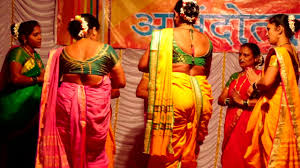Significance of Navartri Bommai Golu / Bommala Kolu / Gombe Habba
 |
| Sri Vedanta Desikar |
 |
| Ghatotagaja |
 |
| Traditional Tamilian Wedding |
 |
| Vishwarupam |
 |
| Ratnaharam Nitya Soorigal |
Navaratri is a time when many homes in the southern states of India especially in Tamil Nadu and Karnataka have a festivity of nine days of celebrations with colours, vratams, music, and food.
A significant part of the Navaratri festival in this region includes the tradition of the Bommai , which is a creation of an assembly of dolls that signify the richness and diversity of life. (Bommai means doll, and Golu means the display or artistic display). 'Golu' in Tamil and 'Kolu' in Telugu. It is believed that this creation is born from the Mother Divine, and Navaratri is the time for one to remember, revere and worship the source - the Devi.
Navratri is celebrated four times a year:
In one year period, four Navarathri are observed and devoted for attribution on the lotus feet of Mother Goddess. Of the four Navarathri that two Navarathri, namely one that comes during September-October as per the English Almanac and Poratasi month or Kanya month in Tamil and Aswin or Asvija month in Kannada or Telugu during Shukla Paksha of the lunar month after the Mahalaya Paksha or Paksha masa.
It is known to be more sacrosanct than the other three, as it is observed in the whole country in varied rituals and renditions. (Paksha Masa is total attribution for the observation of Ancestors). It is believed that remembrance and observation of Ancestors first please God or Goddess.
God/Goddess blesses the family that primarily remembers their ancestors and carries on the culture and tradition. The second blessed Navarathri comes during Shukla Paksha of the lunar month of Chaitra, corresponding to mid-March to mid-April.
The timing of these Navratras relates to the autumn and outbreak of diseases and ill-ness due to the change in time and seasons change and crop harvest. During this period less water is found on the land due to extreme heat generation and humidity.
The tradition of Bommai Golu or Bommala kolu is a creation of the assembly of Goddess Durga containing a multitude of idols of gods, goddesses, men, animals, businessmen, and children.
The tradition of making the Bommai Golu starts with the setting up of steps in one of the corners of the house. The number of steps could vary from 3 to 11. Many families place nine steps, each step representing the nine days of Navratri. The steps are then covered with a decorative cloth and made ready for the Bommai Golu.
The setting up of the Bommai Golu starts with a Kalash (ceremonial jar) with fresh water covered with coconut and mango leaves. The kalash is placed on the topmost step in the center and is considered to represent the Goddess Durga. Idols of Deities are placed to the left and right of the kalash.
Kushmanda means pumpkin. A pumpkin has many seeds and each seed contains the potential for many more pumpkins. This is representative of the creative power and its eternal nature. The whole creation is like a pumpkin. As Kushmanda, the Devi contains the entire creation within her. She is the Devi of supreme power who can give you the highest prana (creative energy).
Golu could also depict ancient stories depicting scenes from the Ramayana and the Bhagavatham and Puranas.
At some places, clay idols of Goddess Durga are ornamented with different weapons in her eight arms, riding a lion, with demon Maheshasur lying dead at her feet. For eight days these idols are worshipped and then immersed in a river or sea shore on the ninth day with great fanfare.
This period of Navaratri also is believed to be sacred for the recitation of sacred scriptures such as Durga Sapsadi from Markanday Puran. Devi Sahasaranam, Durga, Lakshmi, Saraswati, Annapurna, Kali, Rajarajeshwari Sahaaranams. This narrates how Goddess Maha Sakthi was blessed and provided with weapons by our Trinity of Gods to annihilate Maheshasura, the demon who had forced Gods to leave heaven and take refuge on earth. Musical recitations (Kirtans) by famous musicians are offered for the benefit of the Goddess and devotees.
The Nine forms in which the mother is alankaram or decorated are:
Mother Shailputri or Sati or Bharmi who was the daughter of Himalaya (King of the Mountain), wife of Lord Shiva, and mother of Ganesha and Kartikeya;
Brahmachaarini or Indrani:- who gives the message of pure love to the world;
Chandraghanta or Varahi:- who establishes Justice and wears a crescent moon on Her head;
Kushmaanda or Narasimhi:- who provides the basic necessities to the world and safeguards it;
Gaja Lakshmi:- who gives the gift of differentiation of right from wrong to the world and ensures power;
Kaatyayini or Koumari:- who persistently battles against evil and deceitful entities;
Kaalratri or Kali:-who killed Raktabeej ( a demon who produce a demon from every drop of blood that fell from his body. Goddess eventually licked the blood before it could reach the ground and hence conquered him);
Mother Chaamunda, who killed two demons--Chanda and Munda and restored tranquility;
Maha Gouri or Durga:- who also liberates the world of evil forces;
Sidhidaarthi or Saraswati:- who is a treasure house of mystic powers (Yantra Tantra) and Knowledge (Gyaan).
Rajarajeshwari or Kamadenu:- Who ensures the victory of Good over Evil and blesses humanity with abundance and prosperity on the tenth day called Vijay Dashmi or Dussara (dasva rath or tenth day-n-night).
The other version of the legends relates to Ramayana. It was after the fierce battle with the demon Ravana for the night day, Raja Ram killed him on the Tenth day. As Dashmi or Dussehra is the day of victory. In some parts of Karnataka, Maharashtra, and northern India the effigy of Ravana is made and arrows are shot by the people to symbolize victory and finally, the dummy is burnt.











Comments